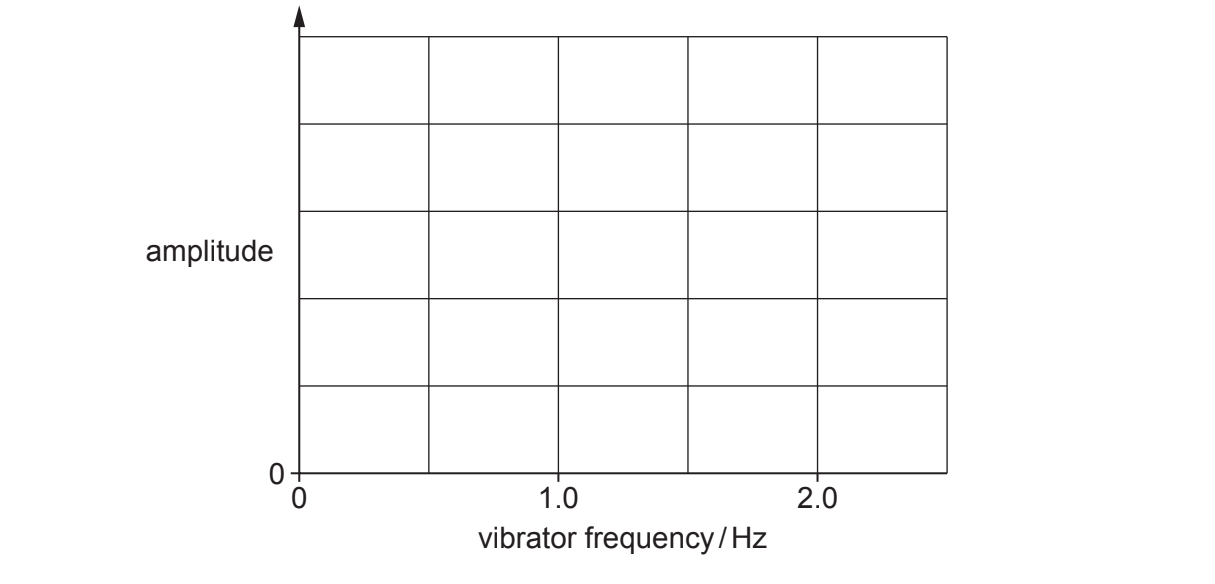A mass hanging from a vertical spring is pulled down. It is then released from rest at time t = 0. The mass oscillates vertically in a vacuum with simple harmonic motion about the equilibrium position. The spring is in tension at all times.
Fig. 18.1 shows the position of the mass at t = 0.

Fig. 18.1
At time t = 6.5 s the magnitude of the acceleration a of the mass is 3.6 ms–2 and its displacement x is 4.6 × 10−2 m.
i) Use the defining equation for simple harmonic motion to show that the natural frequency f0 of the mass-spring system is about 1.4 Hz.
[3]
ii) Calculate the amplitude A of the oscillations.
A = ........................................ m [2]
The mass-spring system shown in Fig. 18.1 is now made to oscillate in air.
Different types of energy are involved in the oscillations of this mass-spring system.
Describe the energy changes that will take place as the mass moves from the lowest point in its motion through the equilibrium position to the highest point in its motion.
[4]
Fig. 18.2 shows the mass and spring now attached to a mechanical vibrator, which can oscillate with variable frequency.

Fig. 18.2
The mass oscillates in air.
i) The vibrator frequency is varied from 0 Hz to 2.5 Hz. On Fig. 18.3, sketch a graph to show the variation with vibrator frequency of the amplitude of the mass. Label your graph K.

Fig. 18.3
[2]
ii) A light disc is now attached to the mass to increase the damping. The vibrator frequency is again varied from 0 Hz to 2.5 Hz. Sketch a second graph on Fig. 18.3 to show the new variation of the amplitude. Label this graph D.
[1]
iii) Explain why the phenomenon demonstrated in this experiment can cause problems for engineers when designing suspended footbridges.
[2]
Did this page help you?
